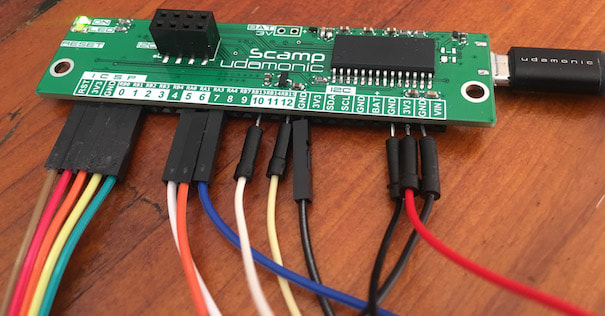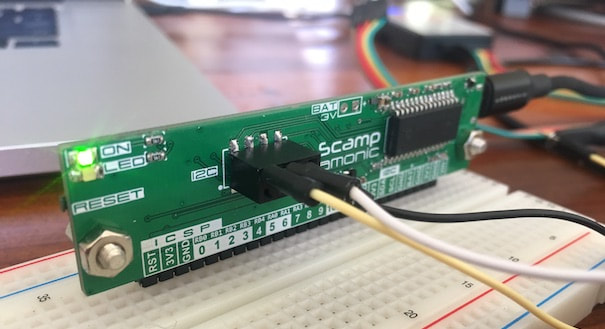Interfacing
You can connect your Scamp using dupont wires directly connected to the I/O connector:
Or, with a pin header, your Scamp can be inserted into a breadboard or mounted onto a custom PCB:
Learn how to use simple digital I/O, sample analog inputs, interface to serial communication devices, add peripherals using I2C, and using PWM to control motors or generate analog signals.
On a Scamp1/Scamp2 the following pins can used with the following functions:
| Pin | Input | Output | Serial | ||||
|---|---|---|---|---|---|---|---|
| 0 | Analog | Input | Switch | Output | PWM | Rx | Tx |
| 1 | Analog | Input | Switch | Output | PWM | Rx | Tx |
| 2 | Analog | Input | Switch | Output | PWM | Rx | Tx |
| 3 | Analog | Input | Switch | Output | PWM | Rx | Tx |
| 4 | Input * | Rx | |||||
| 5 | Analog | Input | Switch | Output | PWM | Rx | Tx |
| 6 | Analog | Input | Switch | Output | PWM | Rx | Tx |
| 7 | Input | Switch | Output | ||||
| 8 | Input | ||||||
| 9 | Input | Switch | Output | PWM | Rx | Tx | |
| 10 | Analog | Input | Switch | Output | PWM | Rx | Tx |
| 11 | Analog | Input | Output | PWM | Rx | Tx | |
| 12 | Input | Switch | Output | PWM | Rx | Tx | |
* 5V tolerant input
Learn : Interfacing


